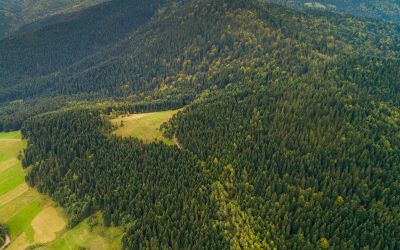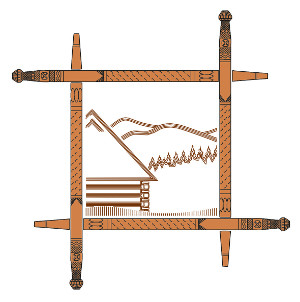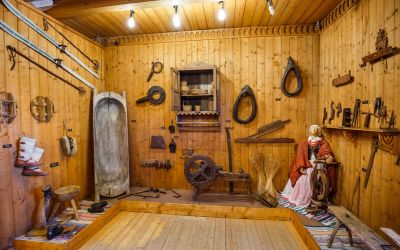In the footsteps of Wołochów around Lesser Poland
We invite you to wander in the footsteps of Wołochów ... 15 thematic routes leading through Lesser Poland, which together form a holistic, cross-sectional image of the shepherd's legacy, for which mountain areas are the background - a context that thanks to the trails gains additional, non-material value.

Czas przejścia:
2:00
Odległość:
31,3
Poziom trudności:
2
Tematyka:
etnografia
Opis produktu
Rabka-Zdrój - Olszówka 5.2 km (0:25 h) - Poręba Wielka 2.9 km (0:20 h) - Bear 1.6 km (0:05 h) - Podobin 2.3 km (0:07 h) - Mszana Dolna 4.8 km (0:15 h) - Raba Niżna 6.1 km (0:25 h) - Rabka Zdrój 8.4 km (0:30 h)
The route is recommended for: individual tourists
When Wołosi arrived in Zagórzany - the ethnographic group inhabiting the northern side of the Gorce and part of the Beskid Wyspowy - Polish farmers who came from the north settled the valleys at the foot of the mountains. Migrant shepherds, occupying vast expanses of the slopes of the Beskids, until now uninhabited, assimilated with the local population. They gave her their habits and management, having a significant impact on the further development of the region.
From the sixteenth century, the northern slopes of Gorce were already in full process of settling newcomers permanently. They also brought seasonal sheep herding to the traditional farming mode of farming. Grazing was carried out both in the gorges and glades, as well as in the nearby Beskid Wyspowy, incl. in Śnieżnica, Ćwilin, Mogielica and Łopień. The Bacowie Zagórzans (originating, among others, from Poręba Wielka, Mszana, Lubomierz and Łętowy) very often included in their herds sheep from the host from neighboring areas, where collective grazing was not so popular. Gorce - just after the Tatra Mountains - was the second largest shepherd center. It is estimated that in 1925, over 10,000 sheep and over 500 cattle grazed in the Gorce and Beskid Wyspowy regions.
Zagórzański folklore has remained relatively weak to this day, succumbing to the influence of from the neighboring Podhale. Despite the fact that traditional instruments and shepherd dances have been forgotten, in the verbal message there are still many stories about famous shepherds, sorcerers and quackers, among others about Bulanda - Tomasz Chlipale, known for healing skills and supernatural abilities.
Route:
The bicycle route runs through one of the interesting places associated with the highlanders inhabiting the northern side of the Gorce.
We start the journey in Rabka-Zdrój, a town known as a popular health resort. We head east, towards the town of Olszówka, which we reach after about 0:25 hours drive. Above the buildings there is a Smelter Glade, where sheep were formerly grazed.
We continue along the main road to reach Poręba Wielka after approx. 0:20 hours. The name of the village comes from a chopped piece of the forest. The headquarters of the Gorce National Park is located here. Immediately behind the buildings of Poręba Wielka, the buildings of the village of Niedźwiedz - on the market square a monument to Władysław Orkan, a Polish writer who created the Young Poland period. The theme of his works was mainly the image of a poor Polish village.
We head north along the main road towards the nearby town of Podobin, which we reach after about 0:07 hours. In the village, in the greatest period of its development, crafts flourished. They operated here, among others furriers, wheelwright, blacksmiths and carpenters. Many peasants from Podbińice were also the owners of Gorce glades, on which local shepherds grazed sheep.
We go further north, after about 0:15 h we reach the road No. 968, where Mszana Dolna is located. Dr Sebastian Flizak, born in the neighboring Podobin, lived here for many years. Władysław Orkan in Rabka, a classical philologist and ethnographer, a distinguished researcher of the Zagórzan culture.
In Mszana Dolna, at the main intersection, turn left and enter the national road No. 28, called the "Carpathian route". We move it west, towards Rabka-Zdrój, to which we reach after about 1:00 h, passing halfway down Raba Niżna - a town located in the Raba Valley, one of the most beautiful Carpathian valleys. Its natural beauty is primarily surrounding the surrounding mountains of the Island Beskids and Gorce and numerous viewpoints.
Dodatkowe informacje
Tourist and cultural events in the area:
- "Weekend with GPN", May, Gorce National Park.
- Watra Ochotnicka, August, Village Culture Center in Ochotnica Górna.
- Autumn redyk in Ochotnica, September, Village Culture Center in Ochotnica Górna
















